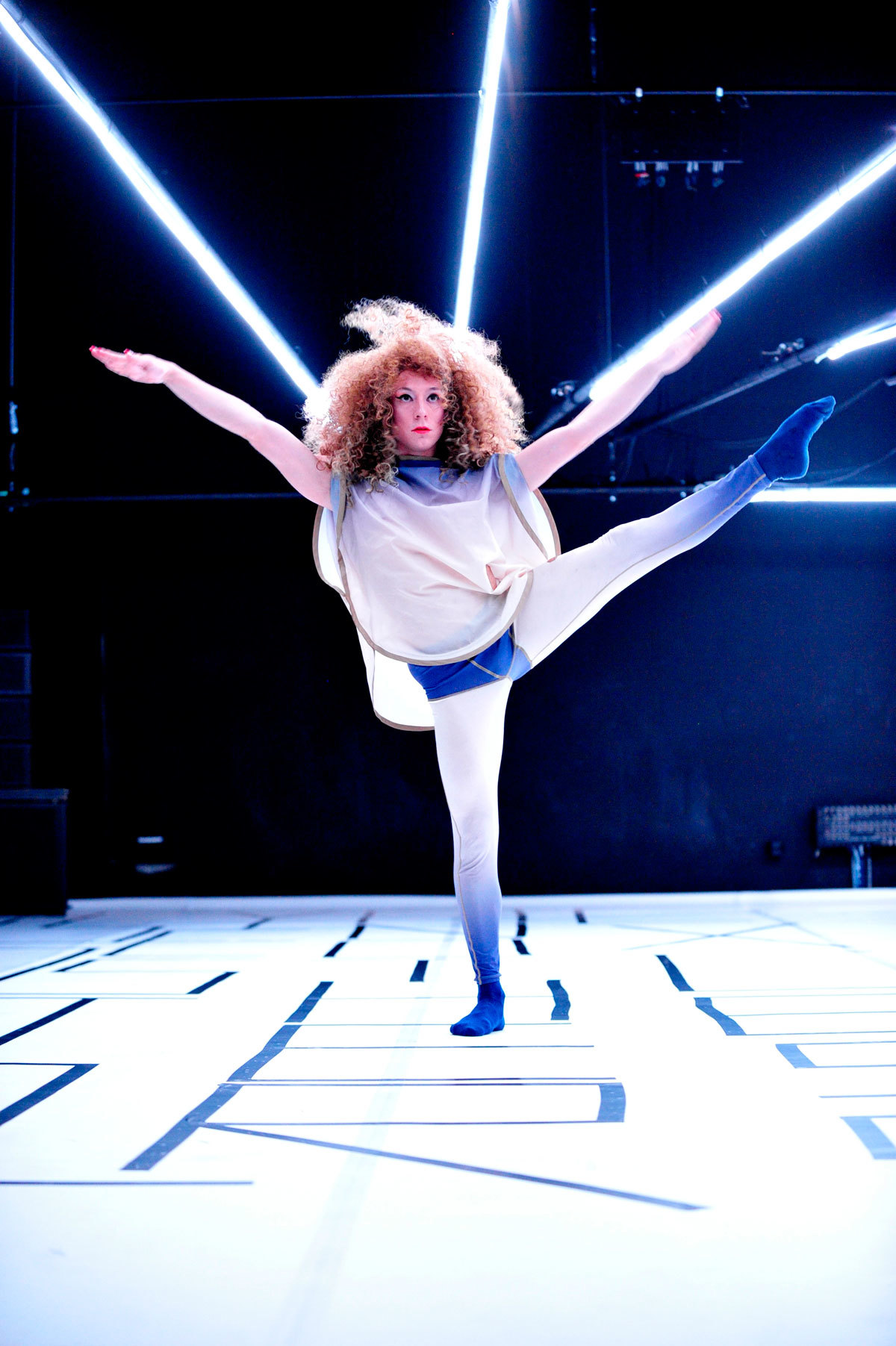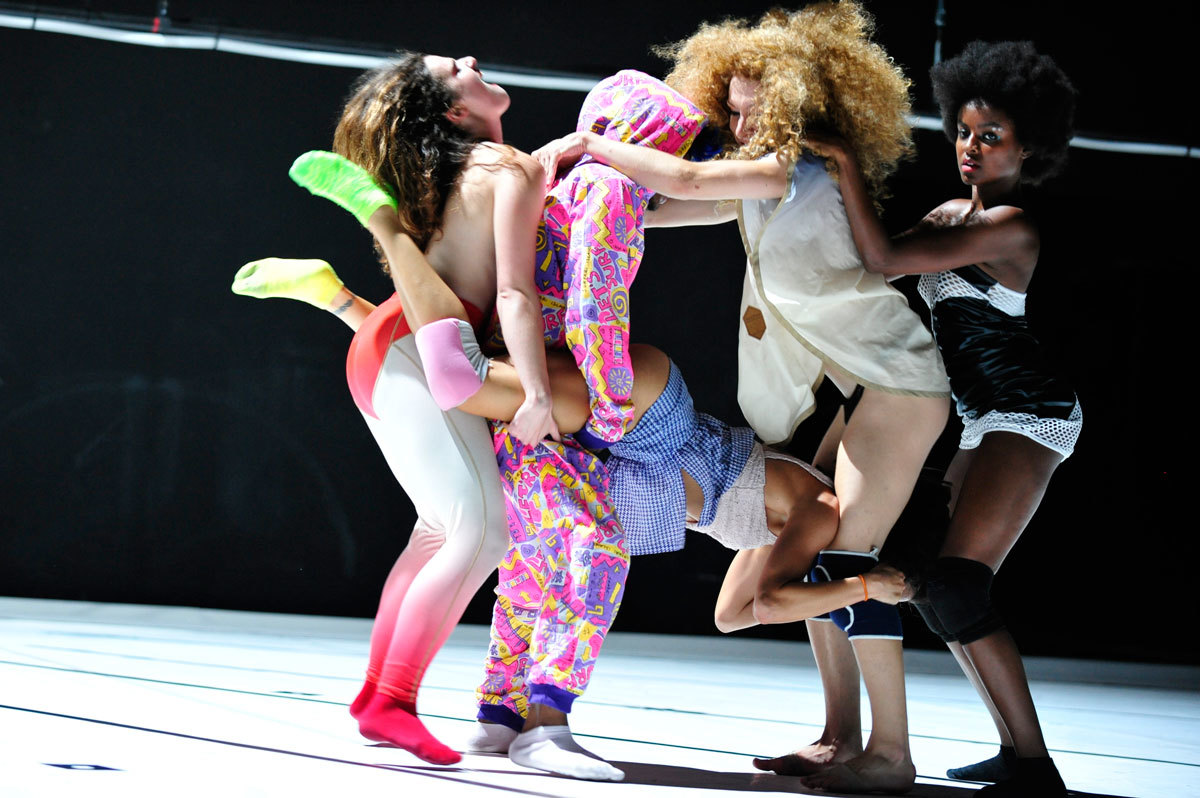As has been well documented, the last 12 months have been good to grime. As well as chart success, an increasingly buoyant live scene and numerous signings, the scene has also spread into unexpected areas, including the Barbican, the ICA, and now Sadlers Wells.
A new show Say Yes To Another Excess … TWERK at the Lilian Baylis Studio combines the sounds of the streets with contemporary dance; Paris-based dance company Vlovajob Pru have teamed with Butterz’ Elijah and Skilliam on a piece that captures the energy of dancehall, vogueing and grime. i-D met up Vlovajob’s François Chaignaud and Cecilia Bengolea, and Butterz’ Elijah to find out more about the project…
François, how did you and Cecilia meet?
François Chaignaud: We both met in France while we were studying and engaged in similar thoughts and processes. I remember what first gathered us was our common determination to demonstrate against laws against sex workers. As dancers, escorts and strip teasers, we felt we had to stand for the legality and the dignity of any gestures, any bodies, any manners to use and stage its own body. We were shocked by the difference of treatment between dancers and sex workers and were willing to let our dance embrace all potentialities of our bodies.
Cecilia Bengolea: In Argentina [where Cecilia is from] contemporary dance doesn’t have its own identity. It copies European and North American modern and postmodern dance. I realised when I came to Europe in 2001, after following dance studies in Salzburg, Brussels and Montpellier that contemporary dance was something very serious, often lacking humour. When we met with François, we were bored with the puritan neutralized bodies of contemporary dance. We wanted to create fluid identities as punk ballet and sexed dances.
How do you feel about the world of dance in 2015? How do you hope that Vlovajob challenges our ideas about contemporary dance?
FC: Historically the place of dance in societies has constantly been changing depending on the political, religious and economic choices made by a society. Nowadays the field of “professional dance” is everything but protected from threats and attempts to deny its legitimacy. Professional dance depends almost solely on public finances, and consequently, it’s become more and more isolated, almost like an island, and very disconnected from other form and ways of practicing dances. I feel this disconnection is bad for everyone! In our work, we try to create sisterhood between those different types of dance, and to make possible the combination of interest for fundamental choreographic research and for urban, social and popular dances.
CB: I don’t think about contemporary dance’s future. I do it now and I look at it as art. I love Michael Clark’s work, Merce Cunningham, Lucinda Childs.
Tell us about Say Yes To Another Excess … TWERK. How did the idea come about?
CB: I wanted to create a dance full of different dances which didn’t have a contemporary vocabulary but was influenced by all the street dances I was practicing. Vogueing, Dancehall, house dance. But we didn’t copy the steps from those dances. We created moves inspired by the intensity and rhythms of street dance.
FC: It came from so many different places, but one of them was to trust in dance—to combine different types of choreographic expressions from various contexts and histories. This piece welcomes all kinds of shapes, coming equally from classical dance, modern and post modern dance, house dance, twerk etc.
Can you remember your first encounter of grime? What was it about the music that inspired you to create a dance piece around it?
CB: I first met the grime scene in Cable, under London Bridge, which has unfortunately closed now. It was a massive party, organised by Butterz – Elijah and Skilliam. JME was MCing. I was thrilled by the contrast of the speed of the beat and the MC’s sexy English accent and articulation, as I was used to American rap. I totally fell in love with the unexpected rhythms of those beats. This triggered me to think how I could be able to dance to such a beat.

Elijah, how did you and Skilliam become involved in the production?
Elijah: They came to our party at Cable back in 2012, and expressed an interest in working [together], at the party. I was confused, but I’m always up for doing things that people don’t expect. My whole career is built from strong collaborations in different areas, so I approach everything with an open mind.
CB: I contacted Elijah and Skilliam to propose them to mix for our show live. It means they always make a different set for each show. I had an immediate good dialogue with Elijah, which made me feel at ease to share my dance world with him.
Elijah, do you have much awareness of dance at all, as a creative medium?
Elijah: Not at all. They opened me up to another world, a totally different circuit to the electronic music world full of different people of all ages in cities I’ve never visited before. We started back in 2012; they invited me to Paris to develop the concept, and then to New York a few months later to refine their ideas. They just wanted someone on hand to give them a constant stream of music, I guess, that has the same kind of energy as what we do in the clubs – the way they discovered us. We have done shows on and off since October 2012 until now.
You first did the show in 2012 – how has it changed since?
FC: Dance pieces are like animals or living creatures. The more they live, the more they grow – even often unconsciously.
“Twerk” has become something of a problematic word, now associated with white musicians appropriating black culture in a negative way. Were you aware of this when naming the show – if so, what comment are you making?
FC: In spring summer 2012, when the title for our piece came up, the word was much, much less known. We actually took it from a song from the American artist Lady (Twerk) that Alex Mugler, one of the dancers of the piece, showed us. One year later or so after we premiered the piece, the whole polemic appeared. It raised the important question of the differentiated value that is given to different cultures depending upon where they are coming from. It is also true in the dance world. Our piece tries to break down those segregations and inequalities.
CB: I don’t think about property in dance. It is different in the art world, where the market is one of the most important players. In dance, the movement belongs to the one who can activate it. I don’t think white people own ballet and black people ass shake. This is another way of post-colonial guilt and discrimination. I go often to Kingston, Jamaica, and the dancers from Dancehall style want to have author rights for their moves, but it’s not possible; everybody can copy them from YouTube and express something different with them.
Say Yes… has been described as provocative and sexually explicit. What are you hoping to challenge/ change/ discuss in your work?
FC: There is no sexual obsession in our work, but there isn’t denial, either. There is a long history between dance and sexuality. We like to embrace it as much as we like to embrace the spiritual aspect of dance, or the formal speculative potential of choreography. I don’t like the fact that the expression of sexuality always seems to locate you in a special place, separated from the world.
CB: It’s true, we don’t aim to be explicit, it happens the body is explicit already and we dance with all of it. The ass can be seen as the ghetto of the body, and we also do ass talk as RAP – Rhythm Ass Poetry – in this show.
Grime is crossing into numerous areas of what are perceived, I guess, to be intellectual/ artistic/ cultural institutions. What does that say about the culture and what impact do you think it has, if any, on the scene?
Elijah: If we detach that grime tag, we are just artists and have the same ambitions for our music as most other people. The original function is designed for club use, but the perfect scenario is to have music that can work in clubs, in films, computer games and in shows like this without having to change our approach. It is creatively quite liberating when you don’t need to rely on one area to make a living either.
What can people expect to see at Sadlers Wells?
Elijah: It’s a hyper, happy introduction to our sound through a non-traditional platform. The show isn’t about us though, it is about the movement they have been inspired to make via our music.
Say Yes To Another Excess … TWERK is at Lilian Baylis Studio at Sadler’s Wells, 5th and 6th March 2015. Free post-show talk with François Chaignaud and Cecilia Bengolea: Thursday 5 March, on stage.
Credits
Text Hattie Collins
Photography Emile Zeizig
